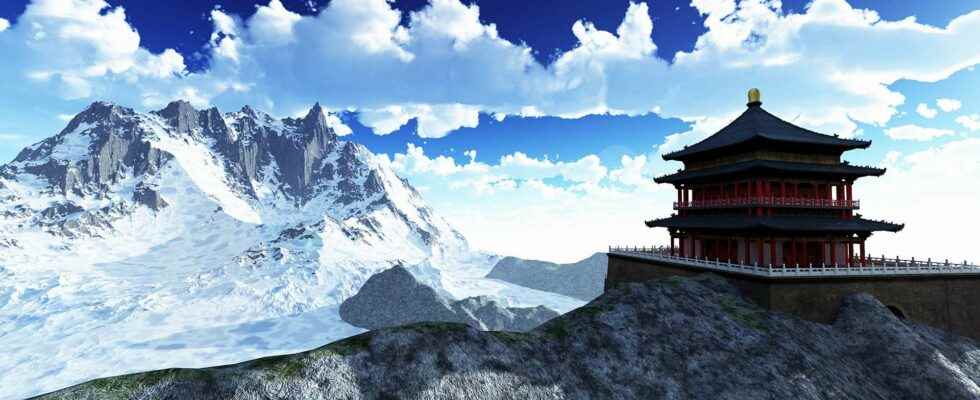Like the Alps, the Himalayas are a mountain range resulting from the collision of two continents: India and Eurasia.
You will also be interested
[EN VIDÉO] A billion years summarized in 40 seconds: plate tectonics Researchers have modeled the movements of tectonic plates over the past billion years.
The Himalayas are one of the largest mountain ranges in the world. It includes the highest peak in the world, Everest, which culminates at 8,849 meters above sea level. More than 2,400 km long and 250 to 400 km wide, this mountain range marks the transition between the Indian plate and the Eurasian plate. It results from a formidable collision between these two masses continental. In this sense, the Himalayas are part of a larger mountain range, associated with this tectonic event, referred to as the Hindu Kush-Himalaya area, which notably includes the Karakoram, Hindu Kush and Pamir chains. .
In the Triassic, India was very far from its current position
The birth of this gigantic set of mountain peaks is intimately linked to the movements tectonic plates and the major processes that govern them. To understand the formation of the Himalayas, you have to go back to Trias, about 200 million years ago. At that time, the continental configuration was far from what we know today. All of the continents are in fact grouped within of a huge supercontinent: Pangea. In the Triassic, the pangea has already begun to fragment. It can be divided into two large sets: the Laurasia continent to the north and the Gondwana continent to the south. The latter is made up of the current continents of South America, Africa, Antarctic, Australian and Indian. In the Trias, India is therefore very far from its current position. It is twinned with Africa, through Madagascar, and Antarctica. It is therefore very close to the South Pole. The north of the Indian continent is separated from the supercontinent Laurasia by a large ocean which has now disappeared, the ocean Tethys.
Following the dynamics of fragmentation of Pangea, Gondwana also begins to break up, notably with the opening of the South-West Indian Ocean, 120 million years ago. India therefore begins to break away from Antarctica, then from Madagascar and to migrate northwards at a speed rather exceptional 20 cm/year. This migration is associated on the one hand with theaccretion oceanic which takes place in the south, but also to the closing of the Tethys ocean in the north by means of a subduction plunging the oceanic crust of this ocean under the Eurasian continent.
India, an island speeding north
80 million years ago, India was therefore an island, located more than 6,000 km from the coast of the Eurasian continent. However, it continues its very rapid ascent towards the north and ends up colliding with Asia, approximately 50 to 60 million years ago. However, the age of the onset of the collision is still very controversial within the scientific community.
This collision follows the closing of the Tethys Ocean which has completely disappeared at the level of the subduction zone bordering the Eurasian continent. The continental crust Indian, lighter than the oceanic crust, will not enter into subduction but will on the contrary indent into the Eurasian continental crust. In this context of compression, the two continental crusts will undergo intense deformations. This deformation is reflected in particular by the development of large crustal scales which will come to pile up one under the other, but also by the uplift of the frontal part of the Eurasia plate.
Formation of the Tibet Range and Plateau
This uplift will give birth to the high plateau of Tibet, which represents a gigantic flat expanse at very high altitude. This high position is explained by the presence, below, of the Indian continental crust. It is estimated that this gigantic continental collision involved more than 2,500 km of crustal shortening. This means that 2,500 km of crust has literally been “absorbed” by tectonic deformation, and in particular by the formation of mountains, including Everest.
India continues to intertwine with Asia
Although most of the oceanic crust of the ocean that once separated India from Eurasia disappeared in the subduction, evidence of it remains. These are the ophiolites. These remnants of ancient oceanic crust were carried away by tectonic processes and are now found in the mountain range.
Currently, the Indian plate continues its push towards the north, but at a slower speed, about 6 cm per year. Over the next 10 million years, the plate should still advance about 1,500 km inside Asia. Part of this shortening is currently absorbed by the Himalayan front, which is why the Himalayas keep growing a few millimeters per year.
Interested in what you just read?
